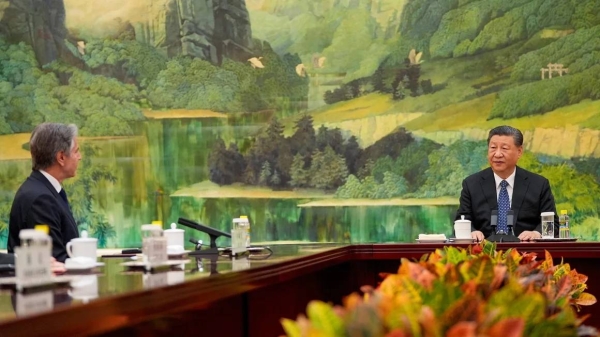
The oil market has had an impressive run since the start of the year. But as we approach the mid point of 2018, it is hard to know if the current bull run will continue.
The oversupply that has dogged the market for more than three years — where oil stored for commercial use greatly exceeded global needs — has been eradicated, thanks to the unprecedented agreement among 24 OPEC and non-OPEC producers in late 2016.
The agreement to curtail output by 1.8 million barrels per day (bpd) from January 2017 has drastically reduced supplies, boosting prices. Last week Brent crude rose to above $80 a barrel for the first time since late 2014.
The elimination of the oversupply raises the question of what to do if the market goes into deficit.
The International Energy Agency (IEA) last week said that OECD commercial stocks declined counter-seasonally by 26.8 million barrels in March to 2.819 billion barrels, their lowest level for three years.
Stocks are now one million barrels below the five-year average, the IEA said. But the output cut agreement is in place until the end of the year. With producers cutting output more than previously agreed, the supply situation is quickly getting tighter.
What will OPEC do to address this? Nothing it seems, yet. The 24 parties to the agreement will meet next month in Vienna to review the deal. Many countries have already pledged to do what is necessary to keep the market balanced; but that may not happen, with producers perhaps opting to keep the market tight for the rest of the year.
"The elimination of the oversupply raises the question of what to do if the market goes into deficit."
Wael Mahdi
There are three main reasons for this. First, many countries have suffered financially over the past three years. Tighter supplies and higher prices provide a golden opportunity to recover some of those losses. Second, the market is tight due to some involuntary cuts, as well as over-zealous reductions by other producers. Thirdly, some supply disruptions are beyond producers’ control, related to geopolitical factors such as sanctions on Iranian crude and possible restrictions on Venezuelan oil.
OPEC and its allies have always said that bringing stocks down to their five-year average was the main goal of the agreement. Now it seems as if some members have had a change of heart, shifting their attention instead to investments in the industry.
In fact, the issue of bringing back investments is not a short-term one and it should be looked at outside the current the cuts agreement. Restoring investments may be a perfectly reasonable motive for keeping cooperation between producers after the agreement expires at the end of the year, but it is not an issue that the current agreement can focus on as it was designed to address oversupply, not deficit.
Any shift in focus is not going to be received well by oil consumers, who will be left to guess what producers’ real motives are —market rebalance and stability or higher oil prices? The one thing consumers know for sure is that rising oil prices are not good for them.
Major consumers have started to make concerns felt, with India and South Korea complaining about prices rising above $80. In the past days Saudi Arabian Energy Minister Khalid Al-Falih has spoken with officials from both countries about this.
It is natural for consumers to feel worried, with prices looking likely to rise further beyond their previous comfort zone of $50-70. Producers, in turn, will argue that customers enjoyed low oil prices for a long time — with Brent crude falling below the $30 a barrel mark in early 2016 — and it is now time for them accept whatever the market dictates.
Before next month’s meeting, producers need to think about what the agreement’s goals should be — keeping the market balanced, or keeping prices at levels acceptable to consumers and producers?
The issue of demand is becoming more pressing, as so far this year the rebalance of the market has relied on higher demand to absorb excess supply. The IEA last week warned that if prices rise too much, demand might fall in the second half of 2018.
Will producers take that warning seriously? This is what everyone will be looking for when they meet in Vienna on June 23.
• Wael Mahdi is an energy reporter specializing on OPEC and a co-author of “OPEC in a Shale Oil World: Where to Next?” Twitter @waelmahdi












